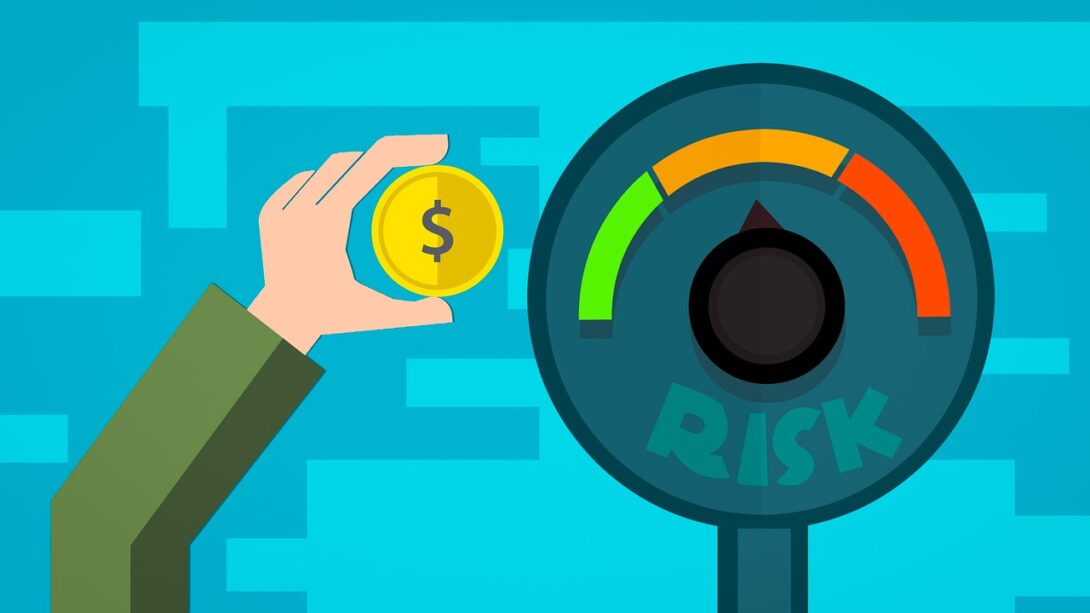Risk is referred to as the possibility of loss. Loss can be of life, health, asset, income, financial, physical ability, etc. A loss can be sudden or predictable. It can destroy one’s personal as well as financial life. Risk represents the uncertainty about whether a loss will occur and perhaps when and how. The individual shouldn’t ignore the potential of loss and should take protective action through risk management.
Every individual experiences low-level risk on a daily basis. Will I go to work safely and on time? Is the food in the refrigerator safe to eat? Will I be harmed in a bike accident? Would I be able to save for my retirement? Will I become disabled? If someone theft my home? Will my company lay off me? Will I get another job? There are many examples we experience daily. Risks may be relatively simple or complex. However, risk management is the solution for the risks. Risk management begins with the identification of the types and potential of risk. Risk management plays an important role in financial planning.
Definition
Risk management is the process of addressing the concerns related to insurable and uninsurable risks. It is the identification, analysis, and control of unacceptable risks.
Techniques
1) Risk Avoidance: Risk avoidance is not doing things that expose to risk. For example, if Paresh wants to avoid the risk of accident due to bike riding, he can choose not to ride a bike. However, it is not always feasible. As an example, giving up driving not be reasonable if alternative modes of transportation are not available.
2) Risk Minimization: Risk minimization or reduction is using strategies to reduce the likelihood of loss caused by a particular risk. For example, driving a bike with appropriate speed and wearing a helmet, and ensuring the brakes work are examples of risk minimization.
3) Risk Transfer: Risk transfer occurs when one individual or entity takes on the risk for the benefit of another. For example, Paresh is planning to do skydiving. So while buying a ticket at a skydiving center, the ticket states that Paresh assumes all the risks related to skydiving, including death. Center is transferring the risk of skydiving to the Paresh. Buying bike insurance transfer the risk of damaging our bike or someone else’s vehicle or person to an insurance company. Insurance is the most common method of risk transfer.
4) Risk Retention: Risk retention may be intentional or unintentional. For example, Paresh with no life insurance might decide that risks related to skydiving are worth it. He doesn’t take steps to avoid, minimize or transfer the risk. On the other hand, he also doesn’t understand the risk of skydiving and assumes them unintentionally. More typically, people choose to retain risk when the potential of loss is unlikely or the cost of loss is small.
Illustration
To know more about how these risk management techniques can work together let’s look at 2 examples
1) Prashant and Pramod are brothers in which Prashant is a trekker. Pramod knew the risk involved in trekking. So he does not want Prashant to go trekking. Pramod is practicing risk avoidance, while Prashant wants to climb a mountain. He is using a guide and wearing protective clothing and accessories. The risk is the same: injury to Prashant. Pramod believes that if Prashant does not trek, he can’t get hurt (Risk Avoidance). Prashant thinks that working with an experienced guide, wearing protective clothing, and keeping fit, will reduce the possibility of injury (Risk Minimization).
2) Rakesh and Mamata, a young couple, have purchased life insurance. They have transferred their risk to the insurance company. The risk was providing financial support to their children in the absence of Rakesh and Mamata. So any unpredictable event happens, the insurance company would pay benefits or claim to children. If children are minors, the benefits will go to the guardian or administrator (grandparents) to help cover the financial loss.
Rules of Risk Management
a) Consider the odds – a person understands that when the financial loss is very low/minimum, insuring such risk may not make sense.
b) Don’t risk a lot for a little – a person will compare the cost of insurance against a potential amount of financial loss.
c) Don’t risk more than you afford to lose – a person decides not to insure his/her car against a loss. So, he is risking a lot (loss of the car) for a little (insurance premium).
The Role of Insurance
Insurance is an excellent tool to use when the possibility and cost of loss is significant. The risks can be transferred to the insurance company at a very affordable price. For most people, it is not possible to avoid risk and live a satisfying life. Living an active and satisfying life means taking calculated risks. Before taking insurance, an individual or family may have suffered losses. Some people would be lucky and others would not. So, insurance is used to protect against many risks at a relatively small cost of the premium.
In a practical manner, insurance is commonly used to manage risk. However, never assume that insurance is the only solution for managing risk. Risk avoidance, minimization, and retention may be appropriate to a specific risk. Besides insurance, an emergency fund is a financial tool that can help you manage the risk of loss.
Importance of Risk Management
Personal risk management helps to provide security so people can focus more on their long-term goals. These goals can be saving, children’s education, investment, retirement, tax planning, estate transfer, and many more. So insurance plays a big and most important role in everyone’s personal as well as financial life.



Great…
Thank You, Nilima